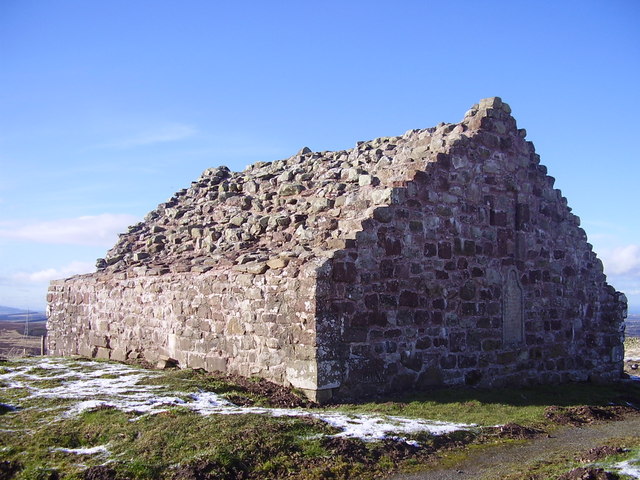Soutra on:
[Wikipedia]
[Google]
[Amazon]
Soutra Aisle, (the present structure lies just within the boundary of the

Scottish Borders
The Scottish Borders ( sco, the Mairches, 'the Marches'; gd, Crìochan na h-Alba) is one of 32 council areas of Scotland. It borders the City of Edinburgh, Dumfries and Galloway, East Lothian, Midlothian, South Lanarkshire, West Lothi ...
from Midlothian
Midlothian (; gd, Meadhan Lodainn) is a historic county, registration county, lieutenancy area and one of 32 council areas of Scotland used for local government. Midlothian lies in the east-central Lowlands, bordering the City of Edinburgh, ...
) not far from Fala, is the remains of the ''House of the Holy Trinity'', a church that was part of a complex comprising a hospital and a friary. It lies half a mile along the B6368 from its junction with the A68.
History
The complex was founded byMalcolm IV
Malcolm IV ( mga, Máel Coluim mac Eanric, label=Medieval Gaelic; gd, Maol Chaluim mac Eanraig), nicknamed Virgo, "the Maiden" (between 23 April and 24 May 11419 December 1165) was King of Scotland from 1153 until his death. He was the eldest ...
in 1164, when he granted it the lands of Brotherstanes up to and including the lands of Lyndean.Huner, James, FSA (Scot)., ''Fala and Soutra, including a History of the Ancient "Domus de Soltre"'', Edinburgh, 1892: 31-2 It was built close to the Via Regia
The Via Regia (Royal Highway) is a European Cultural Route following the route of the historic road of the Middle Ages. There were many such ''viae regiae'' associated with the king in the medieval Holy Roman Empire.
History Origins
The ...
, the main route from the North to the Borders Abbeys; it was known as the House of the Holy Trinity and was run by an Augustinian Order
Augustinians are members of Christian religious orders that follow the Rule of Saint Augustine, written in about 400 AD by Augustine of Hippo. There are two distinct types of Augustinians in Catholic religious orders dating back to the 12th–13 ...
.
The Great Seal of Scotland
The Great Seal of Scotland ( gd, Seala Mòr na h-Alba) is a principal national symbol of Scotland that allows the monarch to authorise official documents without having to sign each document individually. Wax is melted in a metal mould or matrix ...
mentions Thomas Lauder (later Bishop of Dunkeld
Dunkeld (, sco, Dunkell, from gd, Dùn Chailleann, "fort of the Caledonians") is a town in Perth and Kinross, Scotland. The location of a historic cathedral, it lies on the north bank of the River Tay, opposite Birnam. Dunkeld lies close to t ...
) as Master of the Hospital of Soutra on 26 February 1439 (no. 226) and 20 May 1444 (no. 298). A Supplication to Rome dated 7 October 1444 states that he "had been Rector of the church or House of the Holy Trinity of Soltre, Diocese of Saint Andrews, for over seven years".''Calendar of Scottish Supplications to Rome 1433–1447'', edited by Annie Dunlop, David MacLauchlan, and Ian Cowan, vol. iv, University of Glasgow
, image = UofG Coat of Arms.png
, image_size = 150px
, caption = Coat of arms
Flag
, latin_name = Universitas Glasguensis
, motto = la, Via, Veritas, Vita
, ...
Press, 1983, pps: 19, 229, 266-7, nos:78,929,1073. In the supplication dated 7 October 1444 the whole status of the foundation and the purpose of the hospital is discussed, where it is stated that it was "the founders intention to found there a hospital for the reception of the poor rather than a religious place". Its description of the site says: "the church is built at the top of a hill near a public way where there often fierce winds and frequent cold spells".
Following a scandal involving Stephen Fleming, the master of the hospital, the Crown confiscated most of the estates which had supported the hospital in the 1460s.
These estates were granted to Trinity College Hospital in Edinburgh.
This left Soutra Aisle impoverished and it only survived because it became the burial place of the Pringle family in 1686.
Recent archaeological works have revealed evidence of rare seeds ("medicinal products from all over the known world"), used for medicinal treatment. The experts found little above-ground evidence of the hospital because its stones had been removed long ago. Dr Brian Moffat, who led the investigation, estimated in 1993 that the peak years for the hospital were "from around the middle of the 12th century to perhaps the middle of the 15th" with perhaps 300 people residing there to deal with visitors and patients.

See also
*Hospital of St John the Baptist, Arbroath
The Hospital of St John the Baptist, at Arbroath, Scotland, was founded in the early 14th century by the monastic community at Arbroath Abbey. The exact date for the foundation is uncertain, but it is first recorded in 1325 during the time that ...
*Hospitals in medieval Scotland
Hospitals in medieval Scotland can be dated back to the 12th century. From c. 1144 to about 1650 many hospitals, bedehouses and ''maisons Dieu'' were built in Scotland.
There are many terms that apply to, or describe a ''hospital''. The origin o ...
*John Logan (minister)
Rev John Logan FRSE (1748–1788) was a minister in Leith, Scotland, a popular preacher known also as a historian. Self-destructive behaviour saw him end his life as a hack writer in London.
Early life
He was born at a farm in Soutra, near Fala ...
References
External links
* {{authority control 1164 establishments in Scotland Scottish medieval hospitals and almshouses House of the Holy Trinity, Soutra History of the Scottish Borders Hospitals in the Scottish Borders Defunct hospitals in Scotland Hospitals established in the 12th century Scheduled Ancient Monuments in the Scottish Borders Former Christian monasteries in Scotland